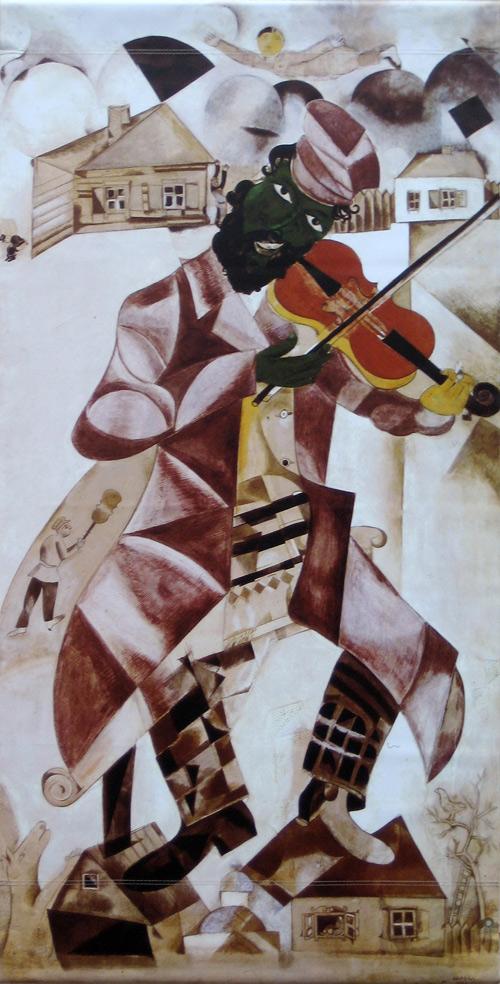Collection: Marc Chagall
Marc Chagall (1887 - 1985) was born in Vitebsk, Russia (now Belarus). He moved to St. Petersburg to advance his art studies in the early 1900s, and ultimately, to Paris to be a part of the rich artistic life of Montparnasse in the 1920s. The inspiration for much of his work points back to his poor, Hasidic Jewish childhood in Vitebsk. He said that Russia inspired his work and France shed light on it. Chagall's work is a cubist, surrealist, fauvist melding of the two places that played such important roles in his life.
He married his first wife Bella, the muse of many of his paintings, in 1915, and they settled in Paris in 1922. Chagall described the time that followed as the best years of his life; his work changed from grim and brooding to placid and still.
Leading up to World War II, Chagall felt the rise of anti-Semitism profoundly. His work became more somber while he tackled Judaism and Christianity. He included crucifixion scenes in his paintings, unusual for a Jewish artist, and the color red gained prominence. Chagall fled the war in Europe and moved to New York where Bella died prematurely of a viral infection. Bella had been his love, muse, and kindred spirit so her passing in 1944 was a heavy blow such that he didn't paint for nearly a year.
Upon completing The Falling Angel in 1947, a work that took almost 25 years to complete and combined biblical lore with modern symbolism, Chagall retreated from public life. At the height of his fame, he moved to the south of France and in 1952 married Valentina Brodsky. Vava, as she was nicknamed, encouraged him to design stained-glass windows. His stunning stained-glass windows are perhaps his most public legacy and can be viewed in churches, cathedrals, public buildings, and hospitals in Europe, the United States, and Israel.
He married his first wife Bella, the muse of many of his paintings, in 1915, and they settled in Paris in 1922. Chagall described the time that followed as the best years of his life; his work changed from grim and brooding to placid and still.
Leading up to World War II, Chagall felt the rise of anti-Semitism profoundly. His work became more somber while he tackled Judaism and Christianity. He included crucifixion scenes in his paintings, unusual for a Jewish artist, and the color red gained prominence. Chagall fled the war in Europe and moved to New York where Bella died prematurely of a viral infection. Bella had been his love, muse, and kindred spirit so her passing in 1944 was a heavy blow such that he didn't paint for nearly a year.
Upon completing The Falling Angel in 1947, a work that took almost 25 years to complete and combined biblical lore with modern symbolism, Chagall retreated from public life. At the height of his fame, he moved to the south of France and in 1952 married Valentina Brodsky. Vava, as she was nicknamed, encouraged him to design stained-glass windows. His stunning stained-glass windows are perhaps his most public legacy and can be viewed in churches, cathedrals, public buildings, and hospitals in Europe, the United States, and Israel.
-
Marc Chagall "Music"
Vendor:Contemporary Jewish MuseumRegular price $499.00 USDRegular priceUnit price / per

